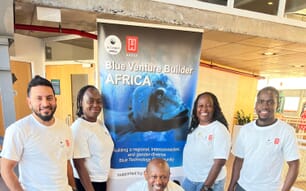Identity
Saccostrea commercialis Iredale & Roughley, 1933 [Ostreidae]
FAO Names: En - Sydney cupped oyster, Fr - Huître creuse d'Australie, Es - Ostra australiana
Biological Features
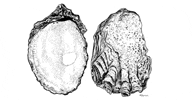
Very variable in shape, lower valve deep and cupped, recessed under the hinge, moderately fluted, more strongly so in exposed positions, and valve edge weakly crenulated. Upper valve flattened, folded towards lip to fit crenulations of lower valve. Hinge line moderately wide, ligament blue. External coloration of valves varies from bluish black to greyish white with indefinite blue-black borders. Internal colour chalky white, with bluish black or sometimes brown border. Muscle scars usually white but frequently having bluish or creamy markings, particularly on upper valve. Small denticles along edge, close together adjacent to hinge but further apart distally on upper valve. Gills and palps creamy colour. Outer fold of mantle white but middle and inner folds and the groove between are pigmented towards edges. Heart auricles narrowly joined together. Grows to 70 - 100 mm in shell height measured from hinge to lip.
Profile
Historical Background
Oyster cultivation began in New South Wales (NSW), Australia around 1870 when oyster farmers began to set out sticks, stones, and shells to catch and grow oysters in the intertidal zone until they could be harvested. Around 1888, spat of oyster from New Zealand were imported into NSW to replenish depleted oyster stocks. The mudworm, Polydora sp., appeared in NSW concurrently with the introduction of New Zealand oysters, and farmers had to develop intertidal farming methods using sticks and trays. This was the dominant growing system from the 1950s till the 1990s and provided some protection against mudworm infestation.
During the 1950s and 1960s the NSW Sydney rock oyster industry exhibited consistent growth as production methods improved and total lease area increased. However, around 1970, production rapidly increased from about 10 to 14 million dozen or 6 000 to 8 400 tonnes (wet weight including shell). Much of this increase was attributed to the increase in the number of farmers who had decided to transport oysters from estuary to estuary to take advantage of differences in the timing of prime growing or fattening conditions. This practice, known as 'highway oyster farming', developed from the mid 1960s onwards. Production rates stabilised during the 1970's at around 13 million dozen (7 800 tonnes) per year. Highway oyster farming was particular prominent in Port Stephens, which produced a lot of spat that were taken by truck to other estuaries for growing. In autumn, large quantities of oysters were taken to the northern rivers of NSW for winter 'fattening' and returned to Port Stephens for marketing in spring. When Pacific oysters were found in Port Stephens in 1984, the transfer of oysters to the northern estuaries was greatly restricted to prevent the spread of Pacific oysters further north. Since 1997, one company with its own hatchery in Albany, Western Australia (WA) has been successfully producing spat from a strain of Sydney rock oysters obtained from Shark Bay. The oysters are successfully farmed near Albany (lat. 35°S), far south of the limit of their natural distribution in Shark Bay (lat. 25°S), WA.
Main Producer Countries
In Australia, a continuous distribution of Sydney rock oysters exists from the Victoria/NSW border (lat. 37°S) on the east coast through temperate NSW, subtropical Queensland, across the tropical north and along the west coast as far south as Shark Bay in Western Australia (lat. 25°S). The Sydney rock oysters along the NSW coast do not differ genetically from each other. The genetics of the oysters in Shark Bay on the west coast and those farmed on the east coast in NSW and southern Queensland have not been fully compared. The species also exists in New Zealand but is not farmed there.
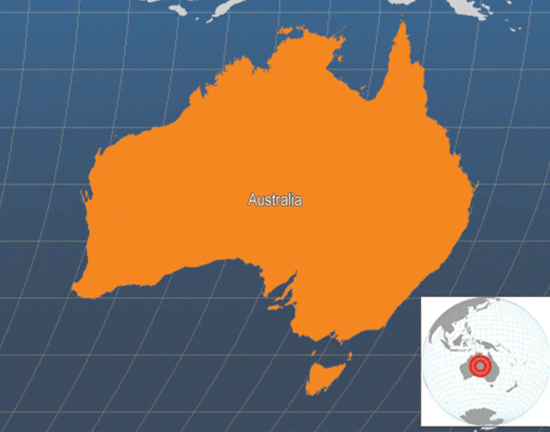
Habitat and biology
The Sydney rock oyster grows and survives best in intertidal estuarine habitats such as rocks, mangroves, and man-made structures, but it also occurs subtidally on natural dredge beds. Until recently, the industry has been totally reliant on an abundance of natural spat as its source of stock. The main spawning and spat settling season for the Sydney rock oyster in Port Stephens, NSW (32°S, 152°E) ranges from February (last month of summer) until May (last month of autumn) when water temperatures are generally above 20°C. Sydney rock oysters are serial spawners; they spawn several times during a season and have a high fecundity, with females producing up to 25 million eggs per spawning. Spawning may be triggered on the ebb tide following a high spring (new moon) tide. Larvae are transported passively by river, tidal and wind driven currents and aggregated by hydrological factors towards the mouth of estuaries, which are important as commercial spat catching areas.
Sydney rock oysters have the ability to change their sex and it is likely that they spawn for the first time as males or at least develop initially as males; in those aspects they are similar to other cupped oysters. During the active breeding season, there is a consistently higher percentage of females among older oysters when compared with younger oysters (of one year or less in age). The percentage of females declines after the breeding season in autumn, with a rise in the number of sexually indeterminate oysters with regressed gonads. Examples of hermaphroditism have only rarely been observed in Sydney rock oysters.
Larvae take around 3 weeks to metamorphose and settle. Growth rates vary with local conditions, but oysters in warmer latitudes (northern NSW) grow faster than those in cooler latitudes (southern NSW). On average it takes an oyster 3½ years to reach plate size (50 g whole weight).
Production
Production Cycle
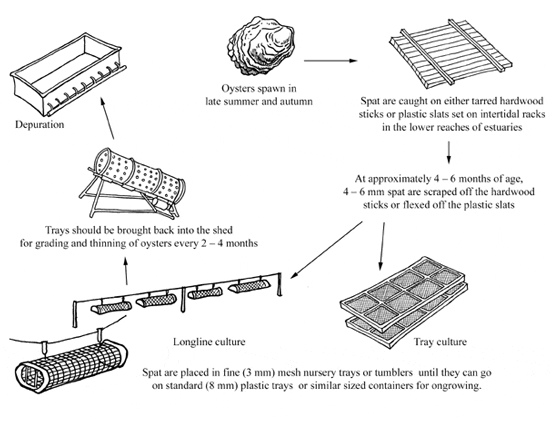
Production Systems
Seed Supply
The Sydney rock oyster industry in NSW and Queensland is dependent on natural spatfall, which has always been abundant and reliable. It takes the Sydney rock oyster an average of 3½ years to reach plate size (50 g whole weight), the most popular size grade. Because of reliable natural spatfall, this industry had not used hatchery technology before 2003. At this time, however, results from NSW Department of Primary Industries' breeding programme using mass selection techniques showed an 11 months reduction in time to grow oysters to a market size of 50 g whole weight. This encouraged the industry to consider hatchery technology. Triploidy is another way of increasing growth rates in Sydney rock oysters. It reduces time to market by six months and kill from winter mortality by half. However triploids should only be used as a winter crop as they may suffer from discolouration over summer, the main marketing season for Sydney rock oysters.
Hatchery Production
Hatchery, larval rearing and spat settling techniques for Sydney rock oysters are based on standard hatchery techniques for oysters. Commercial hatchery production is carried out in NSW and Queensland for east coast growers and also in Western Australia for local growers. There has not been any transfer of live oysters from the west coast to the east coast for ongrowing or vice versa. Sales of hatchery produced spat on the east coast have reached 20 million for 2006 or approximately 15 percent of the industry's annual spat requirements. The proportion of hatchery produced spat used by industry is expected to rise rapidly with the use of genetically improved spat. The Sydney rock oyster breeding programme, conducted by NSW Department of Primary Industries' staff at the Port Stephens Fisheries Centre, Taylor Beach, NSW, has reduced time to market size (50 g whole weight) from 3 to 2 years and produced oysters with dual resistance to QX disease and winter mortality.
Ongrowing Techniques
Traditionally, the larvae of Sydney rock oysters were set on tarred hardwood sticks. Oysters are knocked off these sticks at 0.5 - 3.0 years of age for growing intertidally on timber frame trays (1.8 x 0.9 m) with plastic mesh bottoms, which are placed on timber racks. Alternative growing systems, such as baskets and tumblers are also being used, and some oysters are grown subtidally on rafts or on floating culture. To reduce the amount of tarred timber used in the construction of oyster racks, high-density polyethylene (HDPE) plastic systems are being developed and used. One example is the intertidal longline system, with horizontally suspended plastic tubes of 41 x 91 cm, developed by South Australian oyster farmers.
Harvesting Techniques
The Australian Shellfish Quality Assurance Program (ASQAP) is modelled on the US system and requires that shellfish harvest areas be classified on the basis of a sanitary survey and the results of an ongoing strategic water-sampling programme. The NSW programme currently requires that all oysters harvested in that state are depurated for 36 hours before marketing for human consumption, however with the implementation of the ASQAP, the requirement for depuration will be determined by the classification of a harvest area, as is the case in other Australian states. This ensures that the quality of marketed oysters is very high.
Handling and Processing
Live Sydney rock oysters are best stored at 8-10 ºC; at this temperature they can be kept alive in an excellent condition for 2 weeks. Opened oysters, however, should be refrigerated at 4 ºC and have a typical shell life of 7-10 days. The Sydney rock oyster is a gourmet oyster and is best eaten fresh on the half-shell. There are no uniform oyster grade specifications for this species; however common sizes are Plate, Bistro and Bottle grade, with an average whole weight of 50 g, 45 g and 35 g respectively, which equate to shell lengths of around 77 mm, 73 mm and 66 mm, respectively.
Production Costs
The industry has learned to cope with reducing profit margins and continues to restructure. In New South Wales, the number of people with permits to farm oysters fell from 474 in 1994/95 to 391 in 2002/03. This fall in numbers has been attributed to producers with little or no production leaving the industry, largely as a result of increasing fees and charges. In Queensland there were 32 Sydney rock oyster farmers in 2002/03. This recent decline in the number of producers has had minimal impact on production. This indicates that farmers are becoming more efficient and are successfully reducing production costs and in particular labour costs.
Diseases and Control Measures
The major disease problems affecting Sydney rock oyster are included in the table below.
| Disease | Agent | Type | Syndrome | Measures |
|---|---|---|---|---|
| Mudworm | Polydora websteri | Spionid polychaete | Mudworm blisters on the inside of the shell, which may become black and foul smelling; oysters become unsaleable and susceptible to other stresses, such as high temperatures and low salinities and may suffer high mortality | Intertidal culture; taking oysters out of water in the shade for 7-10 days |
| Winter mortality | Bonamia roughleyi | Protistan parasite | Yellow to brown spots on palps, gills, mantle and surface of gonad and ulceration of palps and adductor muscle; survivors appear unaffected by the disease | Intertidal culture; raising growing height by 150 - 300 mm over autumn and winter; moving oysters to growing areas further upstream in estuaries and rivers in early autumn, before oysters get infested |
| QX disease | Marteilia sydneyi | Haplosporidian parasite | Starved and emaciated oysters, with pale brown coloured digestive tract; survivors remain stunted and weak for a long time | Avoid having oysters in water in autumn when oysters get infested |
| Flatworm | Imogine mcgrathi | Stylochid flatworm | Clean empty shells and flatworm hiding from light in dark places | Restrict use of fine plastic mesh to small spat; take small spat out to dry in the shade for a few days |
Farming methods for the Sydney rock oyster industry have been developed to avoid the mudworm problem. Therefore the industry, which commenced with bottom and dredge bed culture, has developed an intertidal farming system that leaves oysters approximately 70 percent of the time out of water - exposed to air, wind and sun.
Suppliers of pathology expertise
Expertise in pathology can be obtained from:
- Ms. L. Reddacliff, NSW Department of Primary Industries, Elizabeth McArthur Agricultural Institute, Camden, New South Wales 2570, Australia. ?
- Dr. R.D. Adlard, Protozoa Section, Queensland Museum, South Brisbane, Queensland 4101, Australia.
Statistics
Production Statistics
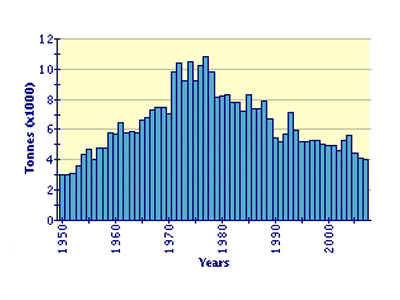
(FAO Fishery Statistic)
Market and Trade
There has been a gradual decline in the proportion of Plate grade oysters sold from 50 percent in 1994/95 down to 25 percent in 2002/03 in favour of smaller Bistro and Bottle grades. While this trend is to some extent a result of market forces and disease management strategies, it is to a large extent determined by a need to maintain cash flow in a capital and labour intensive industry. Most oysters are sold in supermarkets or fish shops; the remainder is sold in restaurants.
Status and Trends
In Australia, oysters are produced for the half-shell market. Exports of Sydney rock oysters are still relatively small and account for less than 2 percent of the value of oysters produced. However, the industry is keen to expand markets through export. It is thought that this will have the added advantage of improving the price of oysters on the local market. The establishment and adoption of the Australian Shellfish Quality Assurance Program will facilitate the development of new export markets in Asia. Although, the number of farmers is declining, production has been stable for over 10 years.
Main Issues
The development and adaptation by industry of hatchery and breeding technologies is one of the major challenges in the modernisation of the Sydney rock oyster industry. This industry had been wholly dependent on natural spatfall, which has always been abundant and reliable. However, when selective breeding demonstrated that it could reduce time to market (50 g whole weight) by nearly a year out of an industry average of 3½ years, the industry wanted to try hatchery technology. This industry, which had never used hatchery technology before, purchased 10 million spat or 8 percent of its annual spat requirement from hatcheries in 2003/2004, the first year that they were made available to farmers. In the 2004/05 season, a further 10 million spat have been produced. This is an encouraging trend if this technology can provide the industry with faster growing disease-resistant spat to increase profitability.
Responsible Aquaculture Practices
The farming of Sydney rock oysters has minimal environmental effects. However, the industry recognises that environmental and socio-economic factors must be considered in determining suitable oyster farming areas. Some of the factors to be considered include navigation, commercial fishing, recreational activity, conservation area, adjoining land use and heritage. The NSW oyster industry is an integral part of many NSW coastal communities. Oyster farming businesses not only generate economic benefits, but also make a positive and constructive contribution to the social fabric of these communities. Oyster farmers appreciate the wider social responsibilities of their businesses and aim to be recognised in their communities as good corporate citizens and environmentally responsible, professional primary producers.
September 2010




